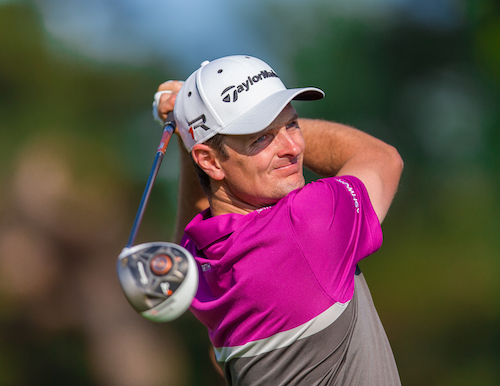You might think that a tennis ball is just a fluorescent yellow tennis ball, right? Wrong!
Tennis balls all differ slightly in the way they play, the type of surface they’re suited to, and of course their brand name. As with most equipment types and apparel, endorsement deals come into play.
Tennis players, both male, and female, have endorsement deals with sportswear companies, wearing their clothes and shoes for major tournaments. These contracts change occasionally but tend to stay the same for however long a player is doing well. These contracts can be at risk if something adverse happens off the court, or if a player suddenly starts playing badly for a long period of time.
When it comes to some of the biggest events on the ATP tour, including the four Grand Slam Majors and the ATP Tour Masters, all nine of them, tennis balls are certainly a topic of conversation too.
There are different ball sponsors for each event and these contracts change occasionally. It’s interesting to look into which balls are used at these tournaments, and well as how long the contracts have been in place, or whether they have changed recently. Players also voice their concerns, likes and dislikes over certain balls from certain companies, and this occasionally plays a part in the decision to renew a contract or terminate it and change companies.
Let’s take a look at which tennis balls are used for the various different major tournaments across the ATP tour.
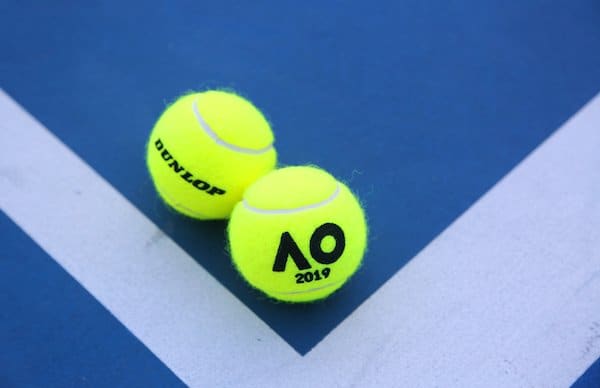
Grand Slams – Which Tennis Balls Are Used?
The year begins with the Australian Open, played ever January, the curtain opener for the professional season. This first Grand Slam of the year currently uses Dunlop tennis balls, made in Japan. This is a relatively new deal, having been signed in 2018 and expected to last for the next five years.
Prior to the Dunlop contract being signed, the Australian Open used Wilson Tennis Balls and has this contract in place for many years. The change to Dunlop didn’t go down so well with all players, with Roger Federer voicing his concerns about the bounce-ability of the Dunlop balls at this year’s curtain opening Grand Slam. Federer wasn’t the only one to mention this, but the contract remains in place, with another three years to run.
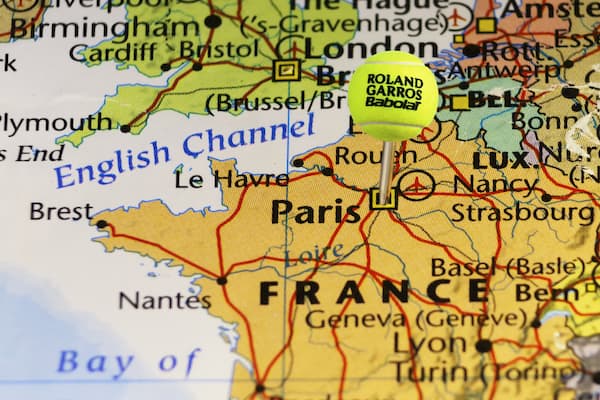
As spring arrives we move on to the French Open, the second Grand Slam the season, played on the clay of Roland Garros. Considered a difficult tournament, due to the slightly different type of surface, the French Open now uses Babolat tennis balls, with the contract in place since 2011.
Prior to 2011, Dunlop was in charge of supplying the French Open, and yet again, the switch proved to be a little unpopular at first. Once again, Federer mentioned that the new Babolat Tennis Balls had bounce issues on the clay, bouncing too high and causing positioning issues at the last minute. This was an issue mirrored by Djokovic also, but it was thought to be due to the weather on that particular tournament year. Since that time, the Babolat balls have seen no complaints come their way.
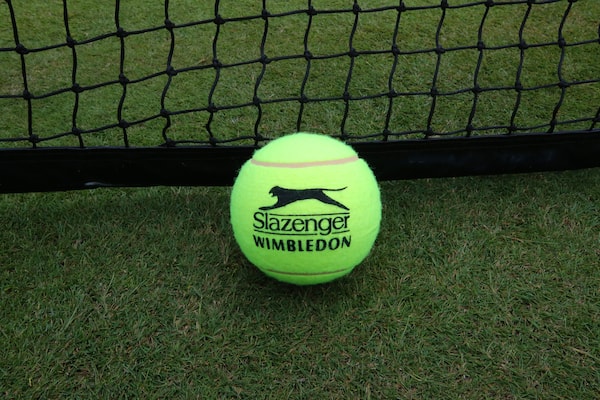
Summer sees the most historic and iconic tournament of them all – the grass of Wimbledon. You’re not likely to see a switch in ball contract here, as Slazenger has been the provider of tennis balls to SW19 since 1902, with no complaints! This is the longest partnership in the history of sporting contracts and no players have ever voiced any concerns in terms of bounce or viability on the courts at this most famous of tournaments.
One of the biggest features of the Wimbledon Slazenger Tennis Balls is their bright colour. This is designed to be visible in the sometimes difficult conditions at this summer tournament, with the summer months occasionally being a little hit and miss weather-wise.
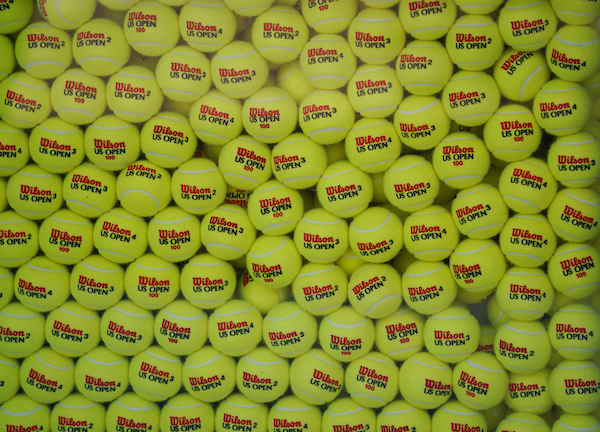
The final Grand Slam of the year takes place at Flushing Meadows, named the US Open. The hard courts of this final Grand Slam were created 1978, with the tournament having been played on grass and even clay prior to that date. Nowadays, the hard courts are synonymous with this tournament and the switch in surface meant a change of balls. The US Open is now supplied by Wilson, with most players agreeing that this brand of tennis balls is best for a hard court surface.
What About The ATP Masters Events?
Whilst all the major Grand Slam tournaments use different branded tennis balls, the ATP Masters events aren’t quite so varied, although do have a few anomalies.
The BNP Paribas Open, held at Indian Wells, and the Miami Open both use HEAD Penn balls, which aren’t used at any other major tournaments across the ATP Tour. During the run-up to the clay-court Grand Slam at Roland-Garros, we see the Rolex Monte Carlo Masters, the Madrid Open, and the Masters 1000, which is held in Rome. These three tournaments use Dunlop branded balls, specifically the Fort Clay Court model. Away from the clay-court tournaments, the Barcelona Open, Shanghai Masters, and tournaments held in Munich, Budapest, and Estoril as part of the ATP 250, also use the Dunlop balls, albeit not the clay-court model.
In that case, Wilson has a large dominance away from the Grand Slam calendar tournaments, although we know that contracts can and do change on a regular basis, with player input being important along the way.
Are The Balls Used on The WTA Tour Different to the ATP Tour?
The brand of balls used in the Grand Slams is exactly the same as the men’s, however, the type of ball used is slightly different. The men use an extra duty ball which is predominantly felt, however, the women use a regular duty type of tennis ball, also made of felt, although with slightly less felt content overall.
This doesn’t make a huge difference but does adapt to the different games well.
Why is a Tennis Ball so Important?
We know that you cannot play tennis without a tennis ball – what would you hit? Despite that, what aspects of the ball are most important?
You’ll see players testing the ball before they serve, choosing which one they want. In this case, they’re looking at the outer aspect of the ball and finding out whether it’s a new ball or one which has been used several times before.
A new tennis ball is smoother, and the felt isn’t raised. When a ball has been hit a few times, the felt sticks up a little and has a “fluffier” effect. In this case, the players are looking for balls that are smooth and don’t have this effect. The fluffy ball isn’t a bad ball per se, it’s simply that a new ball, one which is smooth, is far better for the initial serve, with the second ball being used for the next serve.
Of course, sports companies cannot simply make a tennis ball however they like and they need to conform to strict regulations in terms of the weight, size, shape, and how well it bounces (or otherwise). Every type of ball has to be approved before it can be used at a major tournament.
In order to be eligible for use, a ball must be no more than 2.7” in diameter and cannot weigh more than 2.10oz.
We should point out that the racket is just as important as the ball, and that is why you will see professional players messing around with different string tensions on their racket before settling on a specific measurement. The grip, string, and size of the racket is vitally important, as well as the weight. This all adds up to give the player the best control over their shots.
For instance, tennis strings can be tight or they can be loose. A looser measurement will give you more power, but you’ll have far less control for tight shots. On the other hand, if you go for tighter tension measurement, you’ll get far more control but you won’t have the power. In addition, you might find your strings break regularly and you’ll have to have them restrung quite often.
Final Thoughts
If you thought a tennis ball was just a fluffy, fluorescent yellow ball, think again! The biggest tournaments on the ATP calendar put time and effort into signing contracts with the best manufacturers, in order to ensure the best entertainment for crowds. Sub-standard balls will create sub-standard tennis, no matter how great the player is.
Opting for a long-term contract is rare, and you’ll usually see tournaments signing five years and no more, before deciding whether to renew or not. Despite that, Wimbledon is breaking the mold, having chosen Slazenger for decades. This is a partnership which doesn’t look to be ending at any point in the near future, with constant scientific research going into how to make a ball bounce better, perform better, and feel better.
Read about Top 10 Tennis Racket Grips


